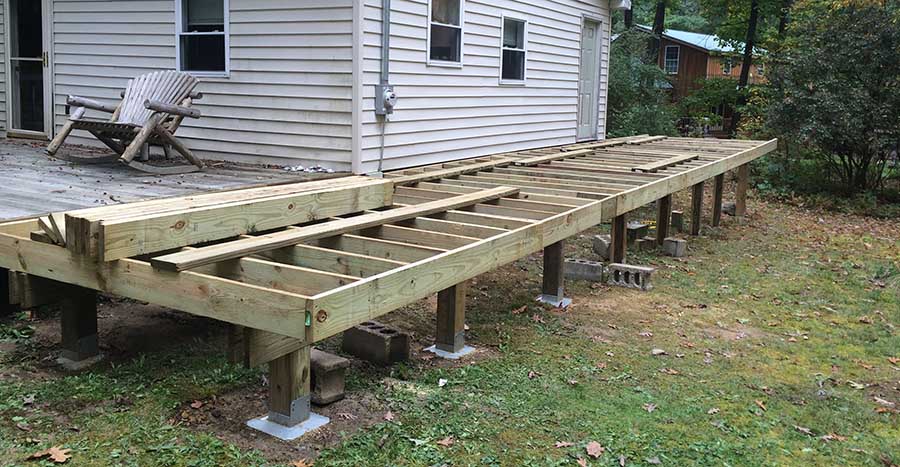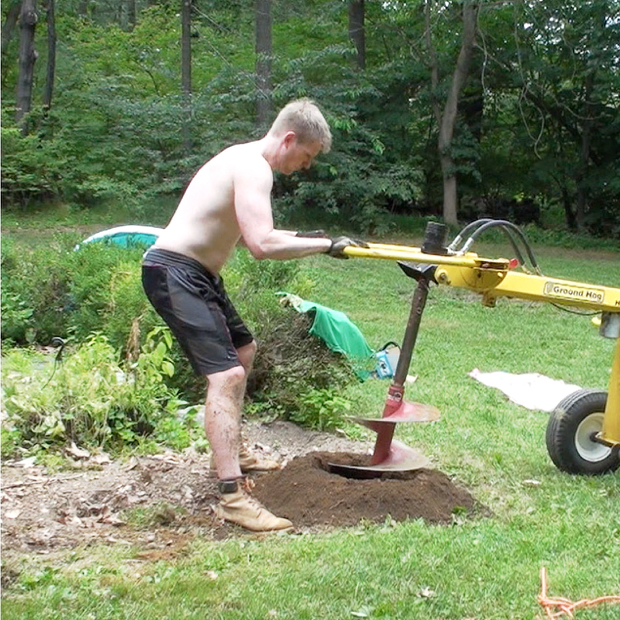Engineered for Success: The Scientific Research Behind Robust and Resilient Deck Footings
Engineered for Success: The Scientific Research Behind Robust and Resilient Deck Footings
Blog Article
Professional Tips for Setting Up Deck Footings to Assistance Your Outdoor Space
When it comes to developing a deck, one of the most vital elements to think about is the installation of appropriate grounds. These grounds are the foundation upon which your outdoor area will certainly relax, providing security and support for years to come. What exactly does it take to set up deck grounds appropriately?
Significance of Proper Deck Footings
Correct deck footings are essential for making certain the stability and durability of your exterior room. Without strong and appropriately set up footings, your deck may become unpredictable, leading to safety and security hazards and costly fixings.

Along with stability, appropriate deck footings likewise add to the long life of your exterior area (Deck Footings). Footings that are made and created to hold up against the aspects and soil problems in your location will certainly help prevent the deck from clearing up or shifting in time. By making sure the footings are correctly sized and set up, you can minimize the risk of damage to the deck structure, prolonging its life expectancy and lowering the need for expensive fixings or substitutes

Picking the Right Kind Of Footings
When choosing the ideal kind of grounds for your deck, it is essential to consider aspects such as dirt conditions, regional building codes, and the general layout of your exterior room. The kind of footing you pick will play a vital function in making certain the security and longevity of your deck.
One usual type of ground is the concrete footing. Concrete grounds are ideal for most soil conditions and supply superb support for decks.
Sometimes, you might need to utilize customized grounds, such as pile footings or deep structures, if you are constructing a multi-level or huge deck. These grounds are created to disperse the weight of the deck over a larger location, guaranteeing stability and avoiding sinking or resolving.
Prior to selecting a kind of footing, it is necessary to consult local building ordinance and laws to make certain conformity. Additionally, consider the layout and intended usage of your outside space. Variables such as the dimension, shape, and load-bearing requirements of your deck will certainly affect the type of footing that is most appropriate.
Preparing the Ground for Footing Setup
To correctly prepare the ground for footing installment, it is important to assess the soil problems and take required actions to ensure security and longevity of the deck. The very first action is to excavate the area where the footings will be installed.
Once the location has actually been dug deep into, from this source the next step is to small the soil. This can be done making use of a plate compactor or by utilizing a hand tamper. Compacting the dirt helps to eliminate any type of gaps or air pockets, which can result in clearing up and instability with time.
After condensing the soil, it is essential to lay a layer of gravel or smashed stone at the bottom of the excavation. This will certainly give drain and help to avoid water from merging around the grounds, which can bring about erosion and instability.
Step-by-Step Guide to Setting Up Deck Footings
After appropriately preparing the ground for footing installment, the following action is to begin the process of mounting deck footings. This step-by-step guide will offer you with a clear understanding of exactly how to mount deck grounds for your outside space.
Establish the location: Beginning by marking the positions of the deck footings utilizing stakes and string. Ensure that the areas align with the style and layout of your deck.
Dig the holes: Use a message opening digger or an auger to dig the holes for the footings. The deepness and size of the openings must remain in conformity with regional building regulations and the certain requirements of your deck style.
Level the holes: Make use of a degree to make sure that the holes are dug to the proper deepness and are degree with each other. (Deck Footings)
Add crushed rock: Place a layer of gravel at the end of each opening to enhance water drainage and prevent the timber check my reference from deteriorating.
Insert the footings: Put the grounds into the holes, making certain they are level and plumb. Use a degree and a gauging tape to make sure accuracy.
Protect the footings: Put concrete into the holes around the footings, loading them to the top. Make use of a blog post degree to make sure the footings remain degree as the concrete sets.
Allow time for curing: Let the concrete remedy according to the supplier's guidelines prior to waging the deck building.
Usual Errors to Avoid Throughout Footing Setup
One important facet to think about throughout the installation of deck grounds is preventing common errors that can jeopardize the security and durability of your outside space. While deck grounds may feel like a straightforward and basic part of the construction procedure, forgeting certain aspects can lead to expensive fixings and prospective safety and security risks down the line.

In addition, disregarding to set up correct drain actions can trigger water to collect around the grounds, causing rot, degeneration, and the eventual weakening of the deck's structure. In addition, making use of the wrong kind of footing material or stopping working to effectively secure the footings can endanger their architectural honesty.
To avoid these errors, it is crucial to seek advice from a professional or follow industry standards to make sure proper footing installation. By doing so, you can ensure the security and long life of your outdoor area, giving a enjoyable and safe setting for years to their explanation find.
Conclusion
To conclude, setting up appropriate deck grounds is important for the security and durability of your exterior room. By picking the ideal type of grounds and appropriately preparing the ground, you can ensure a solid foundation for your deck. Following a step-by-step overview and avoiding typical errors during footing installment will better boost the sturdiness and security of your deck.
Appropriate deck footings are vital for making sure the stability and durability of your outdoor space. The grounds offer as a link in between the deck and the ground, permitting the weight of the deck and its owners to be spread uniformly into the dirt.One typical type of footing is the concrete ground. Place the footings: Place the grounds into the holes, making certain they are level and plumb. Protect the grounds: Pour concrete right into the holes around the grounds, filling them to the top.
Report this page